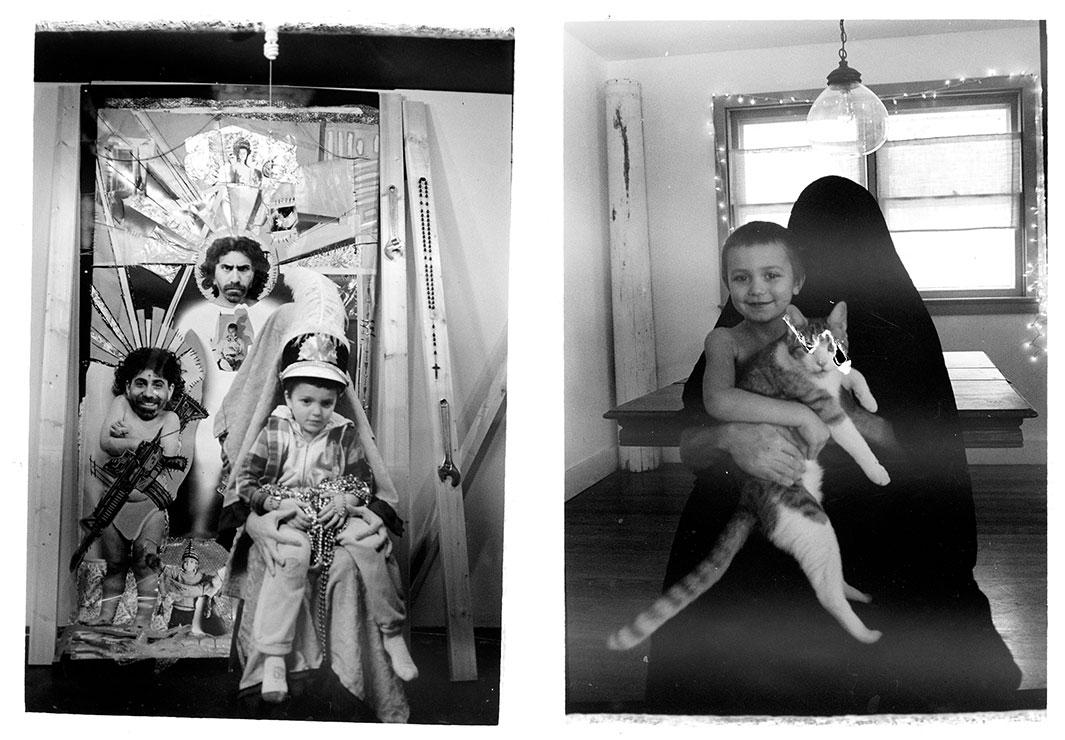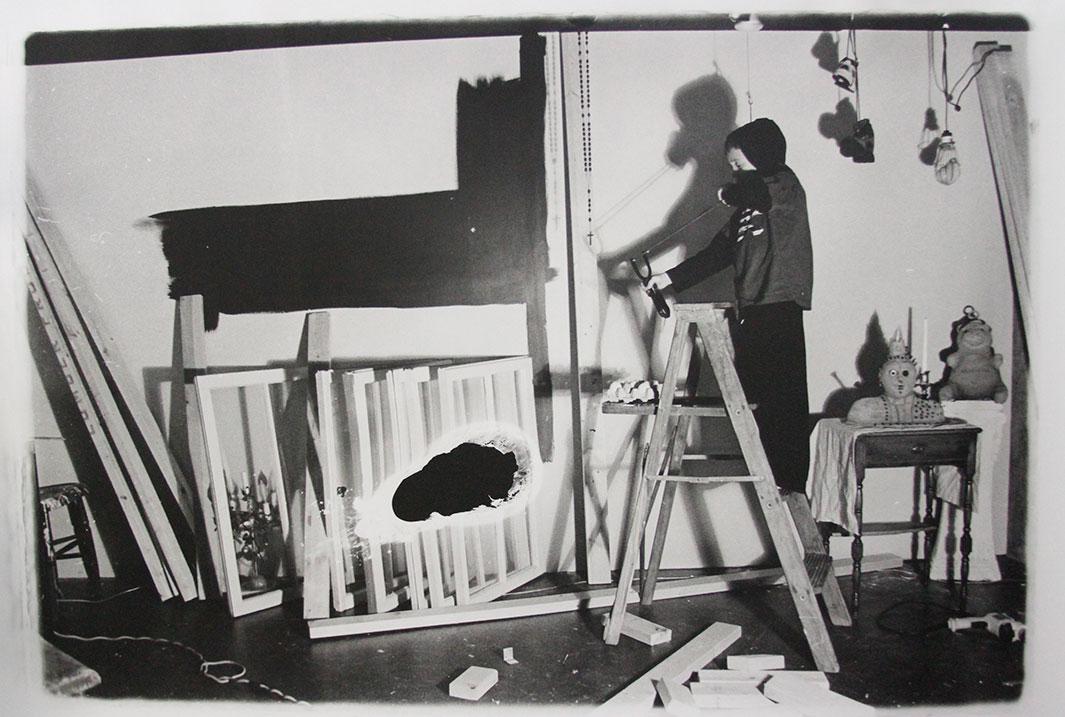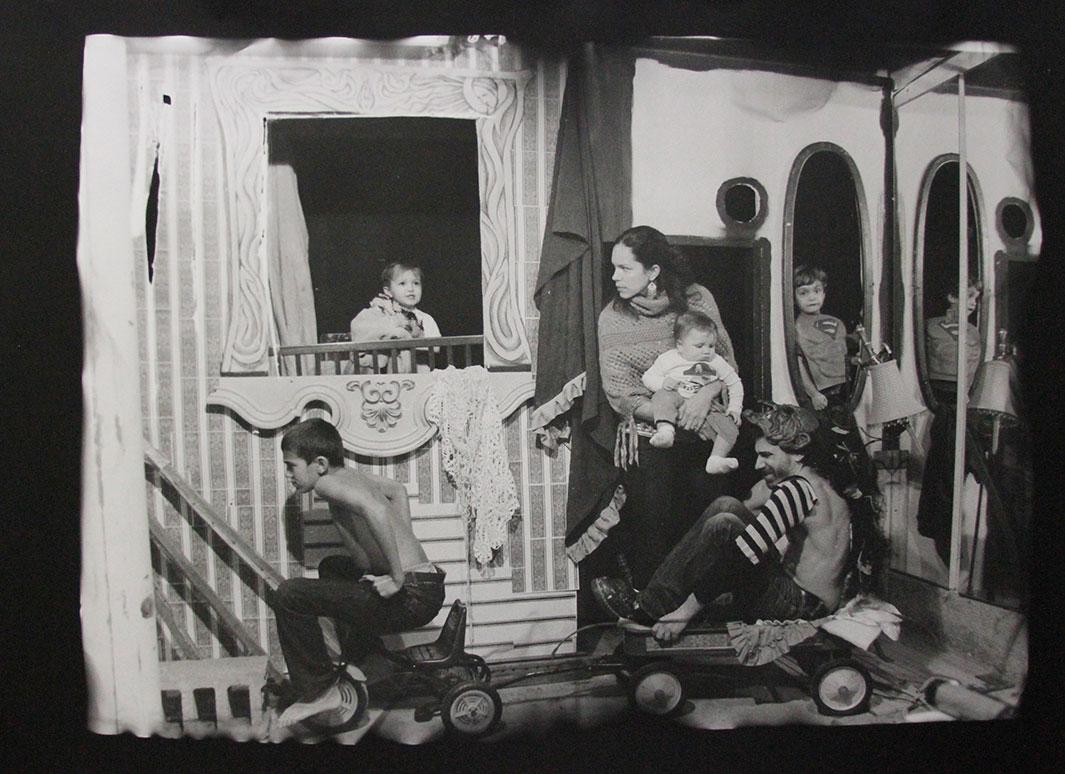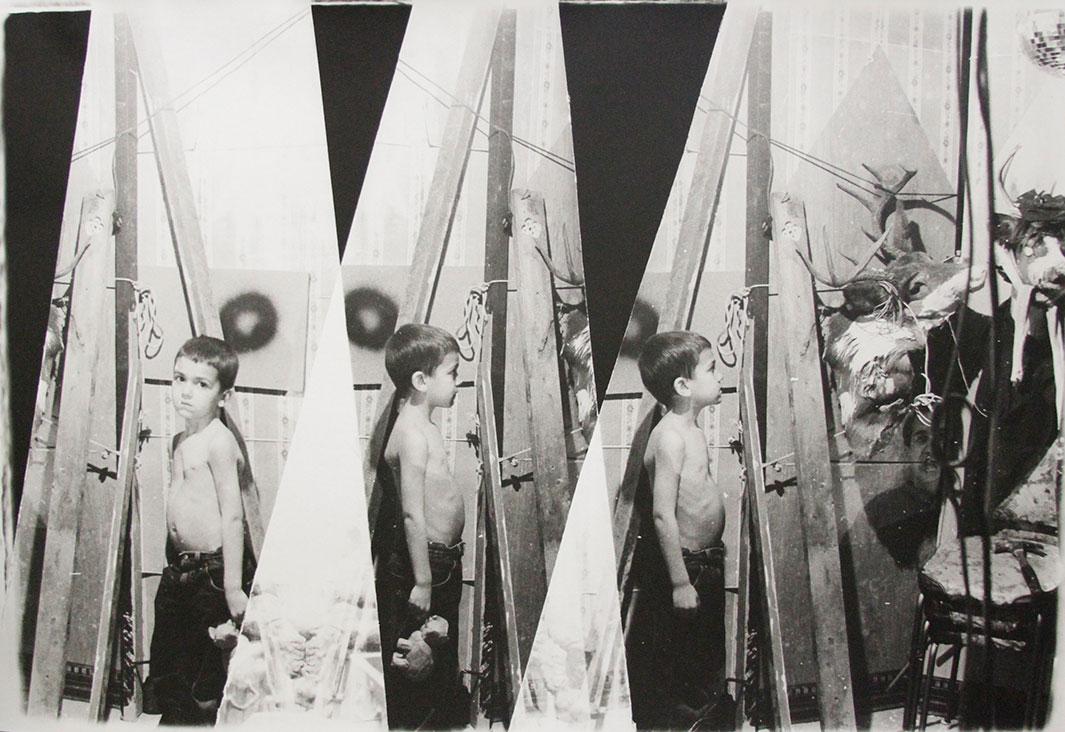The black-and-white family photos that make up Tim Roda’s series “Hidden Father” were, for the most part, taken with an old Minolta 35 mm camera, the same model Roda’s father had used.
It might not seem to be an important detail, but it is significant since Roda’s work is often rooted in family history and domestic life coupled with his attraction to more traditional forms of photography, specifically the film negative.
Like Roda’s other work, “Hidden Father” explores the role of the father and the son’s relationship within the family. The title of the work is a reference to the “Hidden Mother” portraits of the Victorian age, when mothers would disguise themselves as props within the portraits so only their baby would appear in the final image. For Roda, who comes from an Italian background, the series title’s play on the past is partly an exploration of gender roles that in his household have always been blurred, especially as he and his wife raise four boys together.

Tim Roda, courtesy Daniel Cooney Fine Art, New York

Tim Roda, courtesy Daniel Cooney Fine Art, New York

Tim Roda, courtesy Daniel Cooney Fine Art, New York
Roda said that when he was a child his introduction to making art began with his imagination and creating things with whatever happened to be around. He would staple he-man figures to his ceiling or build coat racks out of deer antlers and old trophies. “At one point I wanted to expand into my siblings’ old room so I cut through the wall to adjoin the two rooms and make a makeshift archway,” he said. “Thinking back on it, this was my very first art studio. I just didn’t photograph it like I do now.”
Today, Roda keeps that same philosophy in his own home, although he has a more formal studio and darkroom where he develops and prints his own images, often getting more physical throughout the processes that range from mixing up chemicals to lying on top of the prints and cutting and slicing up the negatives. His techniques aren’t just about “roughing” up the final photos; they are also part of his conceptual aesthetic. One example of this is the image “Broken,” where Roda burned a hole in the print around the area where his son is shooting a slingshot. Roda stressed that inspiration can come from anywhere.
“Sometimes there are memories and sometimes other things that trigger ideas that need to come out,” he said. “My studio is in my home so my kids are always in and out of it whether I’m there or not, my oldest son and his friends hang out in it.”
For Roda, whether he’s working with clay or wood or a photographic negative, it all comes back to his upbringing and his training, guided mainly by his intuition as well as his lineage but also by his need to express himself.
“I work with materials the same way my dad did or my grandfather did,” he said. “I grow as an artist through trying things and making mistakes. I’m trying to grow as an artist and also as a person.”
“Hidden Father” is on view at Daniel Cooney Fine Art in New York City through July 17.

Tim Roda, courtesy Daniel Cooney Fine Art, New York

Tim Roda, courtesy Daniel Cooney Fine Art, New York

Tim Roda, courtesy Daniel Cooney Fine Art, New York
